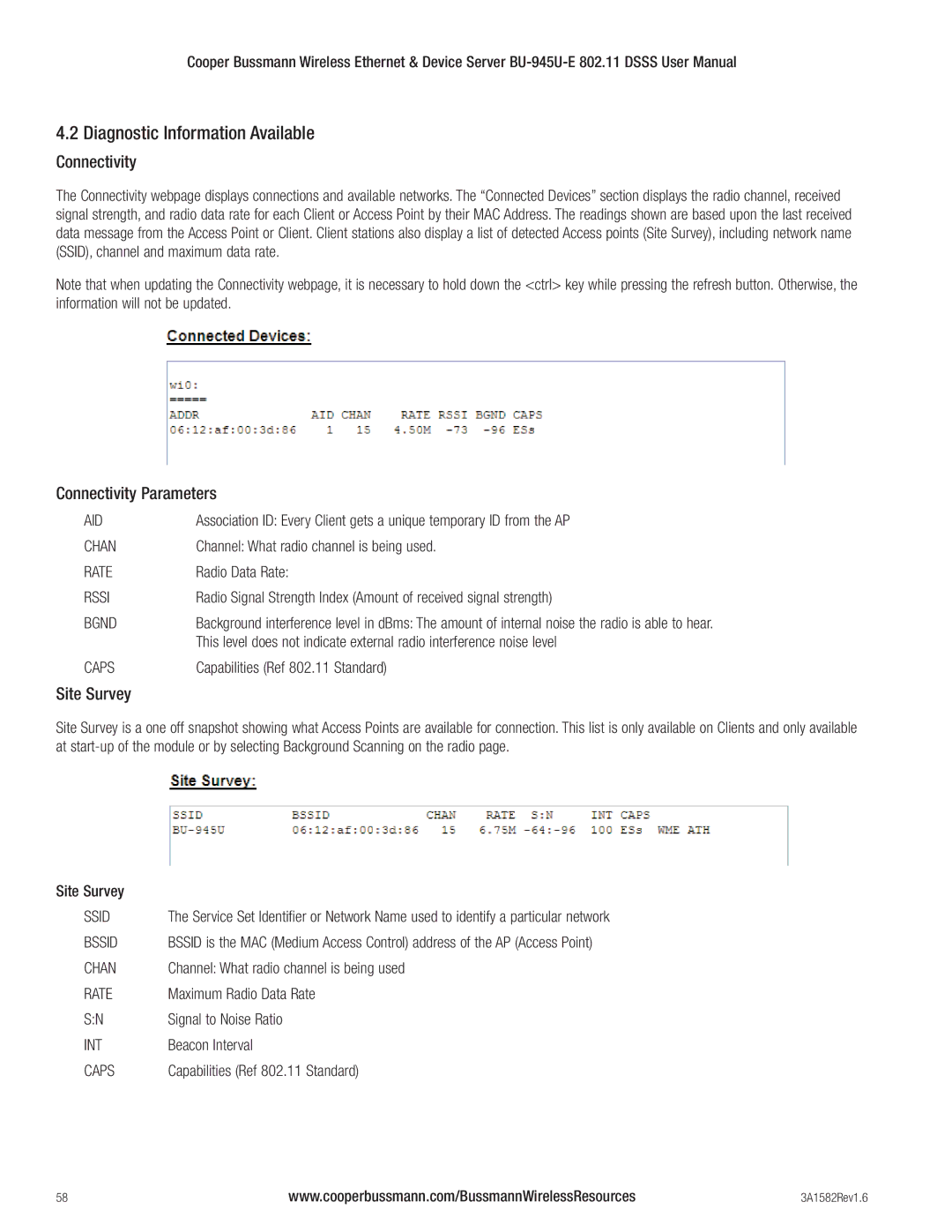
Cooper Bussmann Wireless Ethernet & Device Server
4.2 Diagnostic Information Available
Connectivity
The Connectivity webpage displays connections and available networks. The “Connected Devices” section displays the radio channel, received signal strength, and radio data rate for each Client or Access Point by their MAC Address. The readings shown are based upon the last received data message from the Access Point or Client. Client stations also display a list of detected Access points (Site Survey), including network name (SSID), channel and maximum data rate.
Note that when updating the Connectivity webpage, it is necessary to hold down the <ctrl> key while pressing the refresh button. Otherwise, the information will not be updated.
Connectivity Parameters
AID | Association ID: Every Client gets a unique temporary ID from the AP |
CHAN | Channel: What radio channel is being used. |
RATE | Radio Data Rate: |
RSSI | Radio Signal Strength Index (Amount of received signal strength) |
BGND | Background interference level in dBms: The amount of internal noise the radio is able to hear. |
| This level does not indicate external radio interference noise level |
CAPS | Capabilities (Ref 802.11 Standard) |
Site Survey
Site Survey is a one off snapshot showing what Access Points are available for connection. This list is only available on Clients and only available at
Site Survey |
|
SSID | The Service Set Identifier or Network Name used to identify a particular network |
BSSID | BSSID is the MAC (Medium Access Control) address of the AP (Access Point) |
CHAN | Channel: What radio channel is being used |
RATE | Maximum Radio Data Rate |
S:N | Signal to Noise Ratio |
INT | Beacon Interval |
CAPS | Capabilities (Ref 802.11 Standard) |
58 | www.cooperbussmann.com/BussmannWirelessResources | 3A1582Rev1.6 |
